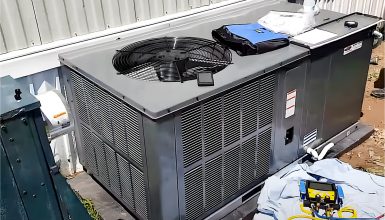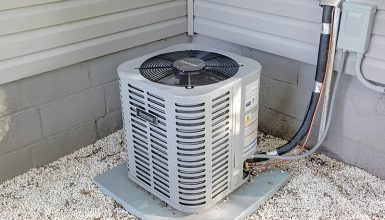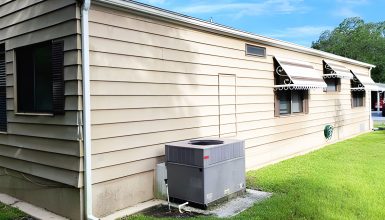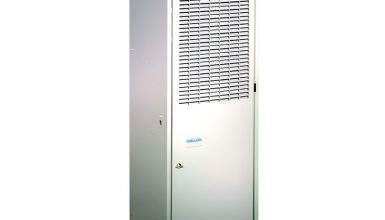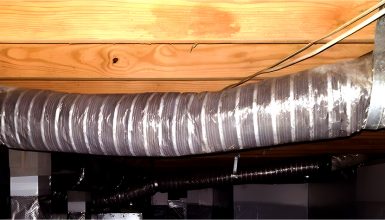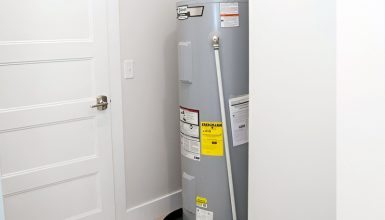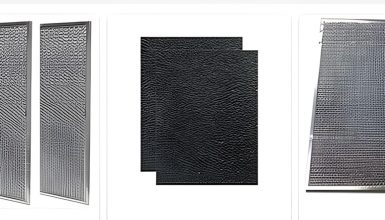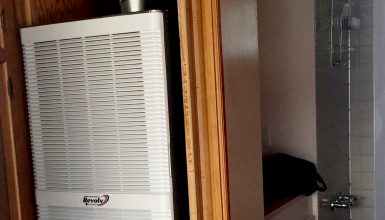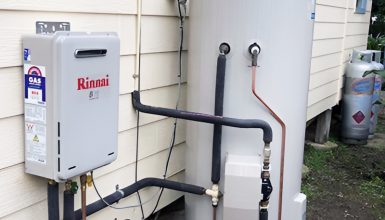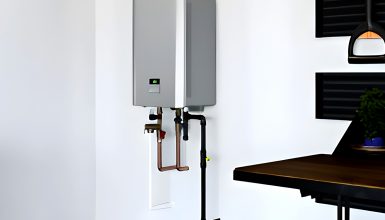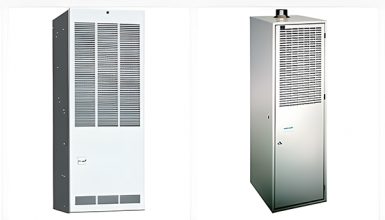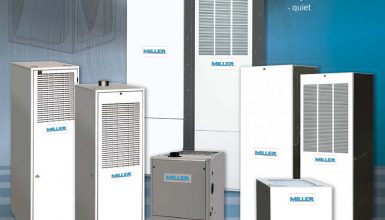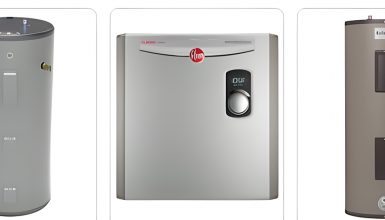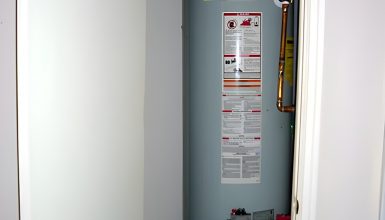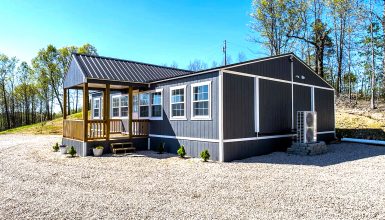A mobile home furnace is a heating system specifically designed to fit in the limited space of a mobile home. Unlike traditional furnaces, mobile home furnaces are smaller and more compact, making them the perfect option for you to live in mobile homes.
In this guide, we’ll dive deeper into the specifics of mobile home furnaces. So you can better understand how they work and why they’re crucial for mobile home living. Let’s get started!
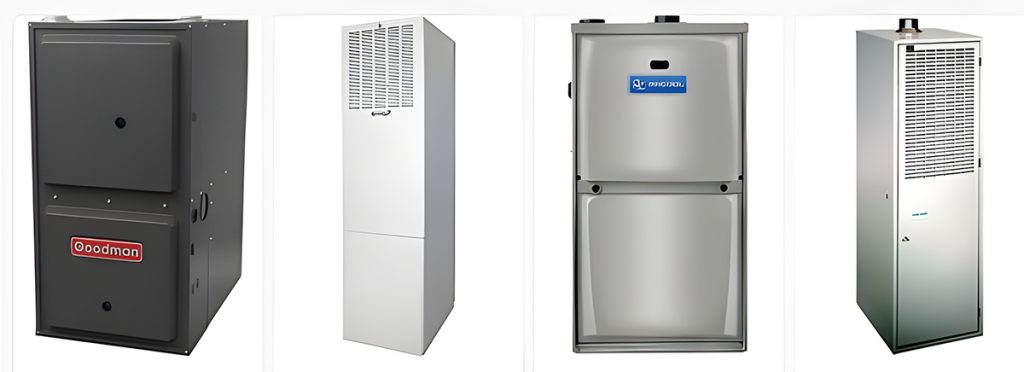
Why Do Mobile Homes Need a Special Furnace?
Mobile homes require a special furnace due to their unique construction, space limitations, and ventilation requirements. Here are some reasons why mobile homes need a specific type of furnace:
- Size and Space Constraints
Mobile homes typically have limited space, so the furnaces designed for them are compact to fit within the available space. Traditional furnaces are often too large to be installed in mobile homes, making it necessary to have specially designed furnaces for these structures.
- Ductwork and Ventilation
Mobile homes have different ductwork and ventilation systems than traditional homes. Mobile home furnaces are designed to work efficiently with the specific duct sizes and airflow requirements found in mobile homes.
- Installation and Configuration
The mobile home furnaces are typically designed for downflow installation, which means that the heated air is pushed down from the furnace and distributed throughout the home. This differs from traditional furnaces, which often use upflow or horizontal configurations. The furnaces are designed to accommodate this specific installation style.
- Safety Regulations
These homes have unique safety regulations when it comes to heating systems. Mobile home furnaces are designed to meet these regulations, ensuring proper venting, combustion air supply, and clearances from combustible materials.
- Energy Efficiency
Mobile home furnaces are designed to provide optimal energy efficiency for smaller spaces, ensuring that the heating system meets the unique needs of mobile homes while minimizing energy consumption.
Types of Mobile Home Furnaces

What kind of furnace do you need for a mobile home? There are three main types: electric, gas, and oil furnace. Each type has advantages and disadvantages, and it’s essential to consider them when choosing a furnace for your mobile home.
1. Electric Furnaces
Electric furnaces are powered by electricity and use heating elements to warm the air. They are typically less expensive to purchase and install than gas or oil furnaces and require less maintenance. Electric furnaces also have a long lifespan and are very safe to operate, as they don’t produce harmful byproducts. However, they can be more expensive to work in the long run, as electricity is generally more expensive than gas or oil.
2. Gas Furnaces
On the other hand, gas furnaces use natural gas or propane to generate heat. They are known for their energy efficiency and can save you money on your energy bills in the long run. Also, these furnaces heat your home quickly and efficiently and can operate even during a power outage. However, they can be more expensive to purchase and install than electric furnaces. And require more maintenance to ensure safe operation. Also, require a gas line connection and proper venting.
3. Oil Furnaces
Oil furnaces use heating oil to generate heat and are typically more efficient than electric furnaces. They are also reliable and can continue operating even during a power outage. However, they are generally more expensive to operate than gas or electric furnaces, as heating oil is more expensive than natural gas or electricity. Additionally, oil furnaces require more maintenance than electric ones and can be more costly if something goes wrong. They can be a good option in areas where natural gas and propane are not readily available.
4. Heat Pumps
Heat pumps are not traditional furnaces, but they can provide heating and cooling for mobile homes. They work by transferring heat from the outside air (air-source heat pump) or the ground (ground-source or geothermal heat pump) to the inside of the home. Heat pumps are energy-efficient and can be an excellent option for mobile homes in moderate climates.
Factors to Consider When Choosing a Mobile Home Furnace
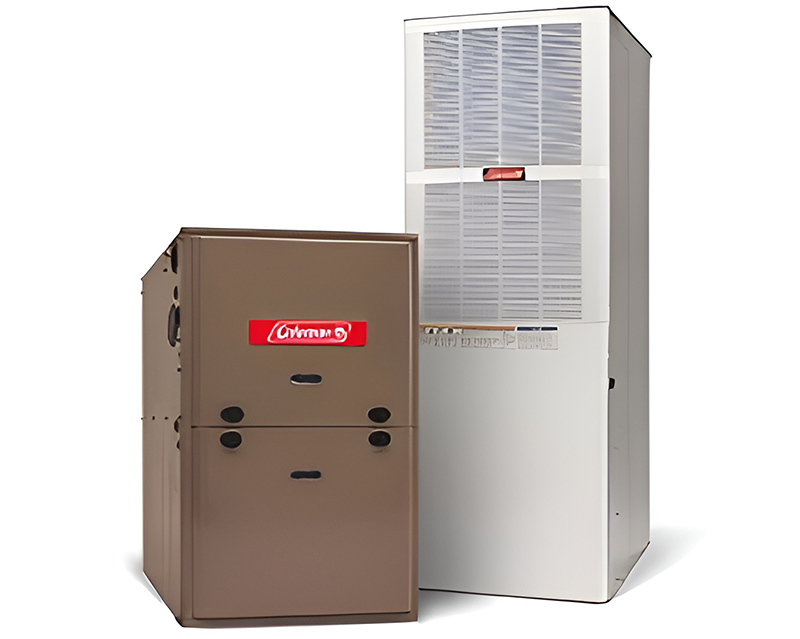
There are several important factors to consider when choosing a mobile home furnace. These factors will help you select a furnace that is the right size, energy-efficient, and cost-effective for your home.
- Mobile Home Size
First and foremost, you need to consider the size of your mobile home. A furnace that is too small will struggle to keep your home warm, while a furnace that is too large will waste energy and money.
To determine the correct size furnace for your home, you will need to consider several factors, including the square footage of your home, the insulation in your walls, and the climate where you live. The first step is to measure the square footage of your home, including all the rooms and areas that need to be heated.
Once you have determined the square footage, you will need to factor in the insulation in your walls. Good insulation will help keep heat inside your home and prevent it from escaping through the walls. If your home has poor insulation, you may need a larger furnace to compensate for the heat loss.
- Energy Efficiency
Energy efficiency is another crucial factor to consider. An energy-efficient furnace can save you money on energy bills in the long run and reduce your carbon footprint.
The energy efficiency of a furnace is measured by its AFUE rating, which stands for Annual Fuel Utilization Efficiency. This rating tells you how much energy the furnace converts into heat. For example, a furnace with an AFUE rating of 90% will convert 90% of its fuel into heat. While the remaining 10% is lost through the venting system.
The higher the AFUE rating, the more energy-efficient the furnace is. A higher AFUE rating can save you money on energy bills in the long run. However, it may require a more significant upfront investment.
- Fuel type
Consider the availability and cost of different fuel types in your area, such as natural gas, propane, oil, or electricity. Each fuel type has advantages and disadvantages regarding efficiency, cost, and environmental impact. Natural gas and propane are generally more energy-efficient than heating oil.
- Climate
The climate where your mobile home is located can impact the type and size of furnace you need. For example, homes in colder climates require a furnace with a higher heating capacity. While homes in more moderate temperatures may benefit from a heat pump system.
- Ventilation and air quality
Ensure that the furnace you choose can be properly vented and provides adequate combustion air to maintain safe and healthy indoor air quality.
- Noise level
If noise is a concern, look for a furnace with noise-reducing features such as insulated cabinets, variable-speed or multi-speed blower motors, and sealed combustion chambers.
- Installation and maintenance
Consider the ease of installation and maintenance when selecting a mobile home furnace. Some furnaces may require more complex installation or frequent maintenance, affecting overall costs and convenience.
- Cost
Consider your budget for the furnace’s upfront cost, installation, and ongoing energy and maintenance costs. Remember that a higher-efficiency furnace may have a higher initial cost but can save you money in the long run through reduced energy consumption.
Furnace for a 1500-square-foot Mobile Home
Determining the right size furnace for your 1500 square foot mobile home depends on various factors such as insulation, climate, and the layout of your home. Considering these factors, a professional HVAC technician would typically calculate load to accurately size a furnace.
However, as a general guideline, you can use the following formula to get a rough estimate of the furnace size you might need:
- Calculate your climate zone’s heating requirement (BTUs) per square foot. Depending on your climate, the BTU requirement typically ranges from 25 to 60 BTUs per square foot. Warmer climates require fewer BTUs, while colder temperatures require more.
- Multiply the BTU requirement per square foot by the total square footage of your mobile home.
For example, if you live in a moderate climate that requires 35 BTUs per square foot, the calculation would be:
35 BTUs/sq.ft. x 1,500 sq. ft. = 52,500 BTUs
This means you would need a furnace with an output of approximately 52,500 BTUs. Remember that this is only a rough estimate; a professional load calculation will provide more accurate sizing.
Quietest Furnace for a Mobile Home
The quietest furnace for a mobile home is typically one that has been designed with noise reduction features and offers efficient performance. While it’s difficult to pinpoint a specific model as the quietest, there are several factors to consider when searching for a quiet mobile home furnace:
- Insulation: A well-insulated furnace cabinet can help reduce noise levels. Look for models with insulated cabinets or those featuring noise-dampening materials.
- Variable-speed or multi-speed blower motors: Furnaces with variable-speed or multi-speed motors generally operate more quietly, as they can run at lower speeds when the heating demand is low. This results in less noise compared to single-speed blowers.
- Sealed combustion: Furnaces with sealed combustion chambers are safer and help reduce noise levels, as the combustion process is isolated from the living space.
- Size and capacity: An appropriately sized furnace will operate more quietly and efficiently. An oversized furnace may cycle on and off frequently, resulting in more noise and wear on the system.
Installation of Mobile Home Furnaces
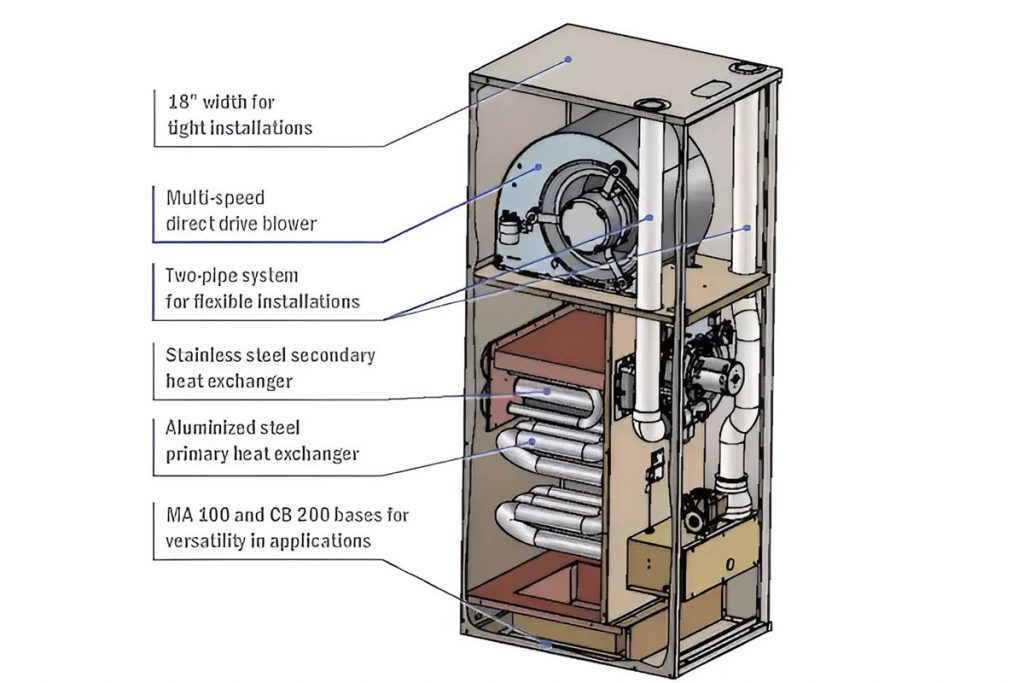
Installing a mobile home furnace is a complex process that should be performed by a qualified HVAC professional to ensure safety, efficiency, and adherence to local codes and regulations. However, to give you an idea of what the installation process entails, here’s a general outline:
Step 1: Preparation
Obtain necessary permits as required by your local building department. Choose the correct size and type of furnace for your mobile home. Safely disconnect and remove the old furnace, if applicable.
Step 2: Location and positioning
Identify the best place for the furnace, considering available space, access to fuel supply, venting, and ductwork connections. Ensure the chosen location complies with any required clearances or safety guidelines. Position the furnace, making sure it is level and secure.
Step 3: Venting and combustion air
Install or inspect the venting system, ensuring it is properly sized and compatible with the new furnace. Install or verify the combustion air intake system, ensuring it is properly sealed and connected to the furnace’s combustion chamber.
Step 4: Fuel supply
Connect the furnace to the appropriate fuel supply, whether natural gas, propane, oil, or electricity. Install a shut-off valve and any required regulators or safety devices. Check for leaks and proper pressure in gas or oil systems.
Step 5: Electrical connections
Connect the furnace to the electrical supply, following the manufacturer’s wiring instructions and adhering to local codes. Install any necessary breakers or disconnect switches.
Step 6: Ductwork connections
Connect the furnace’s supply and return air ducts, ensuring they are adequately sealed and insulated. Adjust or install dampers, as necessary, to balance airflow throughout the home.
Step 7: Thermostat installation
Install a compatible thermostat, following the manufacturer’s instructions. Connect the thermostat to the furnace’s control board.
Step 8: System start-up and testing
Turn on the furnace and perform a safety and performance test, checking for proper ignition, flame characteristics, and venting. Test the thermostat’s control of the furnace and make any necessary adjustments. Measure airflow and temperature rise to ensure the furnace meets the manufacturer’s specifications.
Step 9: Final inspection and documentation
Review the installation to ensure it meets all safety guidelines and local codes. Provide the homeowner with the necessary documentation, such as warranty information, owner’s manual, and maintenance guidelines.
Remember that this is only an overview of the installation process. Specific details may vary depending on the furnace model, mobile home configuration, and local regulations. Always consult a licensed HVAC professional to ensure proper installation and safety for your mobile home furnace.
Mobile Home Furnace Maintenance
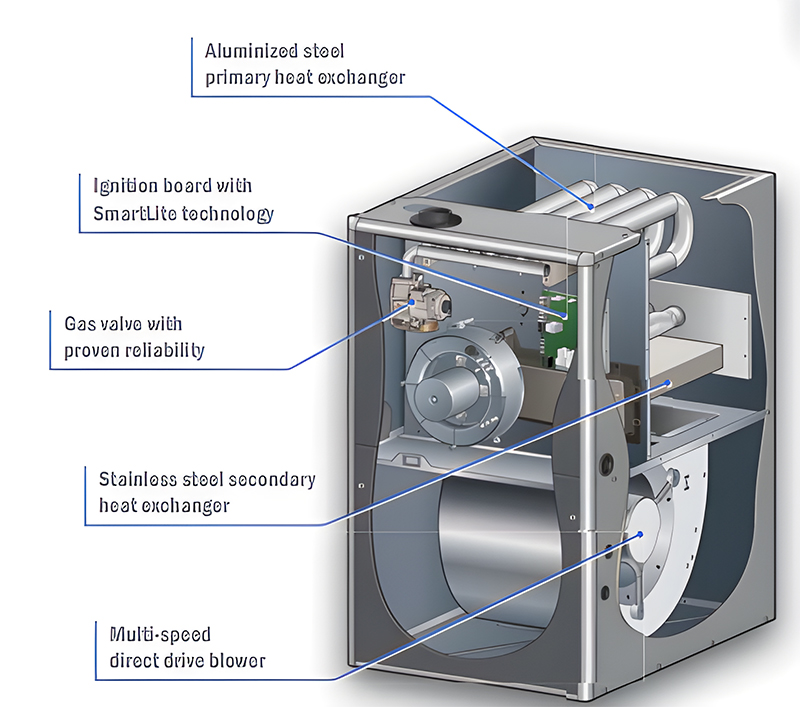
Regular maintenance is essential for keeping your mobile home furnace running efficiently and safely and prolonging its lifespan. While some maintenance tasks can be performed by the homeowner, having your furnace inspected and serviced by a qualified technician at least once a year is always a good idea. Here are some basic maintenance tasks for mobile home furnaces:
- Clean or replace the air filter: Check it regularly (every 1-3 months) and clean or replace it as needed. A dirty filter can restrict airflow, reduce efficiency, and strain the furnace’s components.
- Inspect the blower motor and fan: Check the blower motor and fan for signs of wear, debris, or damage. Clean the fan blades if necessary and lubricate the engine if recommended by the manufacturer.
- Check the belts: Inspect the belts for signs of wear, such as cracks or fraying. Replace any worn belts to ensure proper operation.
- Inspect the vents and ductwork: Check the vents and ductwork for any obstructions, leaks, or damage. Seal any leaks with duct tape or mastic and ensure vents are clear of debris.
- Clean the burners: For gas or oil furnaces, inspect the burners for soot or debris buildup and clean them as needed. This helps ensure proper combustion and prevents potential safety hazards.
- Check the ignition and pilot light: For gas or oil furnaces, inspect the ignition system and pilot light to ensure they function correctly. Clean the pilot light orifice if necessary and ensure the ignition system produces a strong and consistent spark.
- Inspect the heat exchanger: Check the heat exchanger for signs of cracks, rust, or other damage, which could lead to carbon monoxide leaks. If you notice any issues, contact a professional HVAC technician for further inspection and possible replacement.
- Check the safety devices: Inspect the furnace’s safety devices, such as the flame sensor, pressure switch, and limit switch, to ensure they are functioning correctly.
- Inspect the venting system: Check the venting system for any signs of damage, corrosion, or blockages. Ensure proper venting to avoid combustion gas leaks and maintain safe operation.
- Test the thermostat: Check it for proper operation, ensuring it accurately controls the furnace and maintains the desired temperature.
In addition to these basic maintenance tasks, schedule an annual professional inspection and service for your mobile home furnace. A qualified technician will thoroughly examine and clean internal components and ensure your furnace operates safely and efficiently.
Conclusion
In conclusion, choosing the right furnace for your mobile home is an important decision that requires careful consideration. You can select a furnace that meets your heating needs and fits your budget by considering size, energy efficiency, fuel type, cost, and maintenance requirements. Hiring a licensed and experienced HVAC contractor to install and maintain your mobile home furnace is essential.

